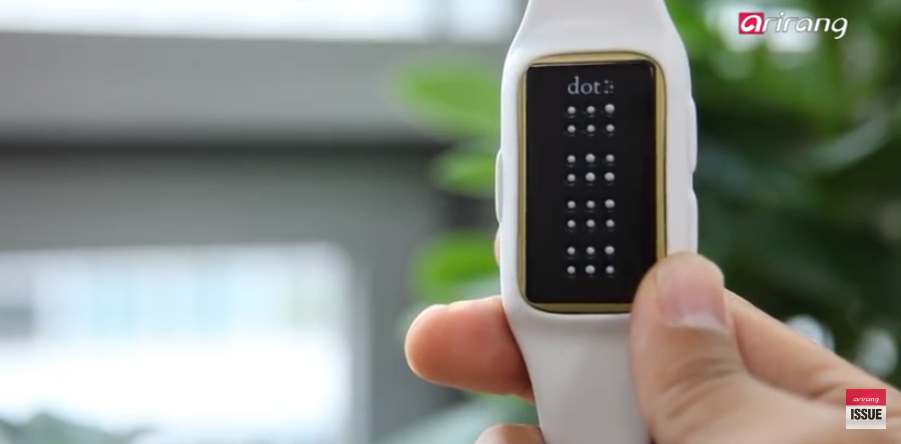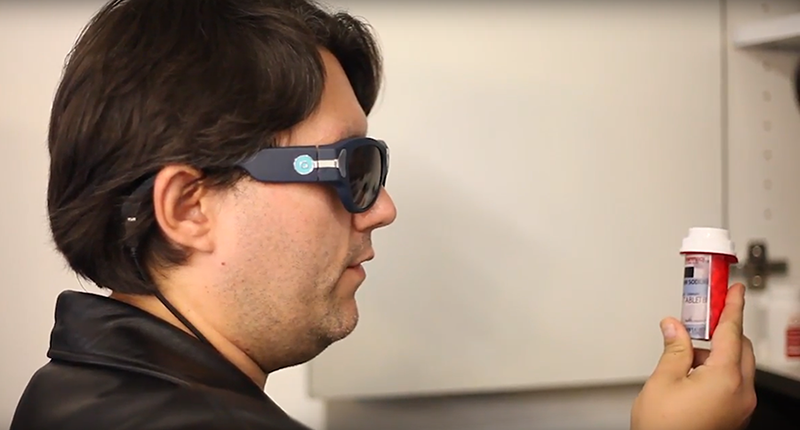Wearable Technology for Low Vision: Making Routines Easier
Wearable Technology for Low Vision: Making Routines Easier
Blog Article
Empowering Self-reliance With Assistive Innovation for the Blind
The assimilation of assistive modern technology into the lives of individuals with aesthetic impairments stands for a considerable development in promoting freedom and self-sufficiency. From cutting-edge screen readers to advanced smart canes, these tools not just boost day-to-day navigating and interaction yet also empower individuals to engage meaningfully in numerous aspects of life. As we explore the myriad advantages and real-world applications of these modern technologies, it comes to be crucial to check out the underlying factors that add to their efficiency and the possibility for future developments in this crucial area.
Summary of Assistive Modern Technology

The growth of assistive modern technology is grounded in principles of inclusivity and empowerment. Advancements in software, equipment, and sensory enhancements provide users with options customized to their certain demands. From display viewers that convert message to speech, to responsive devices that convey details via touch, these devices transform the means individuals engage with their surroundings.
Along with useful applications, assistive technology fosters higher social incorporation and engagement in different industries, including education and learning and work (Screen readers for the blind). As research study and advancement proceed to progress, the possibility for assistive modern technology to better boost the lives of visually impaired people remains appealing, leading the way for a more equitable culture where everybody can grow
Types of Assistive Instruments
A variety of assistive devices have actually arised to sustain people with visual impairments, each developed to satisfy details needs and improve everyday functioning. These devices vary from low-tech solutions to high-tech innovations, offering diverse choices for customers.
Low-tech gadgets consist of magnifiers and large-print materials that assist in reading and writing. Braille tools, such as Braille stylus pens and slates, allow tactile analysis and communication. Orientation and movement aids, like white walking sticks, help users navigate their setting securely.
On the greater end of the range, digital magnifying systems and display visitors provide substantial support. Digital magnifiers allow customers to increase the size of text and photos on displays, while screen viewers convert electronic web content right into manufactured speech, assisting in accessibility to details on computers and smart devices.
Smartphone applications additionally play a critical role, offering features like text recognition and navigation aid. Wearable modern technology, such as wise glasses furnished with augmented reality, is emerging as a promising device to enhance situational recognition.
Advantages of Assistive Modern Technology
The assimilation of assistive technology dramatically improves the top quality of life for individuals with visual impairments. These modern technologies empower customers by promoting independence, allowing them to navigate their environments better and do daily tasks with greater convenience. As an example, display viewers and zoom software program enable people to gain access to electronic info, cultivating educational and professional chances that might have formerly been out of reach.
In addition, assistive gadgets such as wise walking canes and GPS applications supply real-time navigation help, enhancing wheelchair and security. This increased freedom not just boosts self-confidence yet also motivates social engagement, allowing individuals to get involved even more fully in their neighborhoods.
Assistive technology additionally facilitates communication, assisting users attach with others through voice recognition and text-to-speech applications. This capability is essential for keeping relationships and accessing crucial details.
Additionally, the personalization alternatives offered with numerous assistive technologies ensure that individuals can tailor devices to their particular requirements, additionally boosting use and effectiveness. Overall, the advantages of assistive modern technology for individuals with visual impairments are profound, promoting an extra comprehensive society where everyone can seek their objectives and aspirations.
Case Studies and Success Stories
Highlighting the transformative influence of assistive innovation, various situation researches illustrate just how individuals with visual disabilities have effectively incorporated these devices into their day-to-day lives. One compelling example entails an university student who utilized screen reading software application to navigate academic materials and on-line resources successfully. This innovation not just facilitated her education and learning yet additionally enhanced her self-confidence in taking part in conversations and group jobs.
One more case research features an expert that employs a mobile phone application designed for navigating and item recognition. By utilizing this app, he has visite site regained autonomy in both his individual and work environments, allowing him to commute separately and involve with associates more efficiently.
Furthermore, a retiree shared her experience with braille e-readers, which allowed her to access a huge range of literature and remain attached with her community through publication clubs.
These success tales highlight the vital duty of assistive innovation in promoting independence, improving lifestyle, and promoting social assimilation for people with aesthetic impairments (OCR devices for the blind). By welcoming these cutting-edge devices, users can get rid of obstacles and take possibilities that contribute to their personal and professional fulfillment

Future Fads in Assistive Innovation
Technology in assistive modern technology is positioned to redefine the landscape of assistance for people with aesthetic problems. Arising patterns highlight the assimilation of expert system (AI) and device discovering, which improve the performance of tools that aid with navigation and info accessibility. As an example, AI-driven applications are currently capable of interpreting aesthetic information in real-time, allowing users to engage with their setting a lot more individually.
Furthermore, the growth of wearable technology is progressing quickly. Smart glasses furnished with augmented truth (AR) can offer audio summaries of surroundings, changing exactly how individuals communicate with public spaces. These devices not just promote freedom yet additionally foster social addition.
Additionally, the Internet of Points (IoT) is making homes smarter, permitting seamless connection in between assistive devices and day-to-day appliances. This connection encourages customers by making it possible for voice-activated controls and automated actions customized to private their website demands.
Verdict
To conclude, assistive innovation plays a pivotal duty in empowering people with aesthetic problems by enhancing their independence and engagement with their surroundings. The diverse array of devices and applications readily available not just facilitates navigating and interaction but likewise advertises social assimilation and chances for personal and professional growth. As developments continue in this area, the capacity for boosting check my source the quality of life for those with visual problems will certainly increase, fostering greater autonomy and empowerment.

Report this page